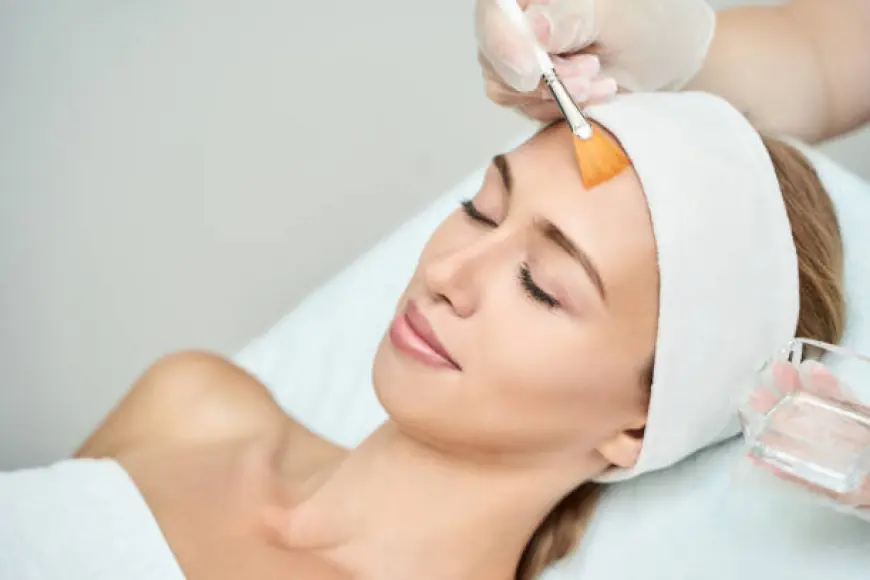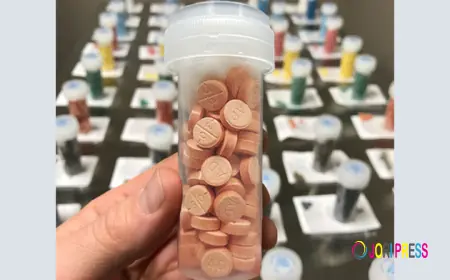Chemical Peels in Islamabad: Recovery Timeline Explained
Rejuvenate your skin with advanced chemical peels in Islamabad. Smooth texture, reduce acne scars & fine lines for a glowing, youthful look.

Chemical peels are one of the most effective non-surgical cosmetic treatments designed to rejuvenate the skin, reduce imperfections, and restore a youthful glow. Many people in the capital city are increasingly opting for chemical peels in Islamabad to treat acne scars, pigmentation, fine lines, and dullness. While the treatment is popular for its results, patients often wonder about the recovery timeline and what they should expect after the procedure. Understanding the recovery process is crucial to achieving the best possible outcome and avoiding unnecessary anxiety.
In this detailed guide, we’ll explain the recovery timeline of chemical peels, from the first day to the final results, and provide tips to ensure a smooth healing journey.
What Happens Immediately After a Chemical Peel?
Right after your session, your skin will feel tight, warm, and sensitive—similar to a sunburn. Depending on whether you’ve had a superficial, medium, or deep peel, the initial redness can last from a few hours to several days. Mild swelling is also common for stronger peels. At this stage, it’s important not to touch, scratch, or wash your face aggressively, as your skin’s barrier is compromised.
Day 1–3: Redness and Sensitivity
During the first few days, redness and tenderness will be at their peak. Your skin may also appear darker or more pigmented than before. This is a natural reaction and part of the exfoliation process.
-
Dos: Apply dermatologist-recommended soothing creams and sunscreen with SPF 30 or higher.
-
Do n’ts: Avoid applying makeup, going out in direct sunlight, or using harsh cleansers.
Superficial peels often recover within these three days, while medium and deep peels require more time.
Day 4–7: Peeling Begins
This is when most patients start noticing visible peeling or flaking of the skin. The old, damaged skin sheds away to reveal new, healthier layers underneath. It might look similar to peeling after sunburn.
-
Important: Never pick or peel off the skin manually—it can cause scarring or uneven pigmentation.
-
Care Tip: Keep your skin hydrated with gentle moisturizers to minimize discomfort.
At this stage, patience is key. Although peeling can be uncomfortable, it’s a vital sign of progress.
Week 2: Fresh Skin Emerges
By the second week, the peeling subsides, and a new, smoother skin layer becomes visible. Patients notice improvements in skin tone, texture, and radiance. However, your skin is still fragile and needs extra care.
-
Continue applying sunscreen daily.
-
Avoid heavy workouts, hot showers, or anything that causes excessive sweating.
-
Do not use active skincare ingredients like retinoids or acids unless your dermatologist approves.
Week 3–4: Noticeable Results
By the third to fourth week, your skin has largely healed. At this stage, the results of the peel become more noticeable—reduced pigmentation, improved clarity, and a youthful glow. Superficial peels typically show visible improvement by this time. For medium or deep peels, results continue to improve gradually over the coming months.
Long-Term Healing: Up to 3 Months
Deep chemical peels may take up to three months for complete healing. Redness may persist for several weeks, and ongoing skincare maintenance is critical. Dermatologists often recommend follow-up treatments or maintenance peels for long-lasting results.
During this time:
-
Stick to a dermatologist-approved skincare regimen.
-
Attend follow-up appointments. These visits allow your specialist to monitor healing and guide you on when to reintroduce active skincare products.
-
Protect against UV rays. Sun exposure is the biggest risk for complications post-peel.
Factors That Influence Recovery
Not every patient heals at the same rate. Factors such as skin type, peel depth, aftercare routine, and lifestyle choices all play a role. For instance:
-
Deeper peels require longer downtime.
-
Fairer skin tones may show redness for extended periods.
-
Smokers or those with poor skincare habits may heal more slowly.
This is why consulting an experienced dermatologist is essential before undergoing the treatment.
Tips for a Smooth Recovery
-
Follow professional instructions: Only use products recommended by your doctor.
-
Stay hydrated: Drinking plenty of water supports skin regeneration.
-
Sleep with your head elevated: This minimizes swelling, especially after medium or deep peels.
-
Avoid strenuous activity: Sweat can irritate healing skin.
-
Be patient: Results take time, and rushing recovery can compromise outcomes.
When to Contact Your Dermatologist
While most recovery experiences are smooth, complications can occur in rare cases. Seek immediate help if you experience:
-
Excessive swelling or pus
-
Severe burning sensation
-
Persistent redness lasting more than two weeks (for lighter peels)
-
Signs of infection
Prompt professional guidance ensures minor issues don’t escalate into bigger problems.
Final Thoughts
Understanding the recovery timeline of chemical peels helps patients set realistic expectations and avoid unnecessary worry. From redness and peeling to the final reveal of rejuvenated skin, every stage is a natural part of the healing process. With proper care, patience, and professional guidance, chemical peels can transform the skin beautifully and safely.
If you’re considering chemical peels in Islamabad, always choose a trusted and experienced clinic for the best outcomes. The Dynamic Clinic offers advanced chemical peel treatments tailored to your skin type and recovery needs, ensuring a safe and satisfying transformation.
What's Your Reaction?
 Like
0
Like
0
 Dislike
0
Dislike
0
 Love
0
Love
0
 Funny
0
Funny
0
 Angry
0
Angry
0
 Sad
0
Sad
0
 Wow
0
Wow
0


















































